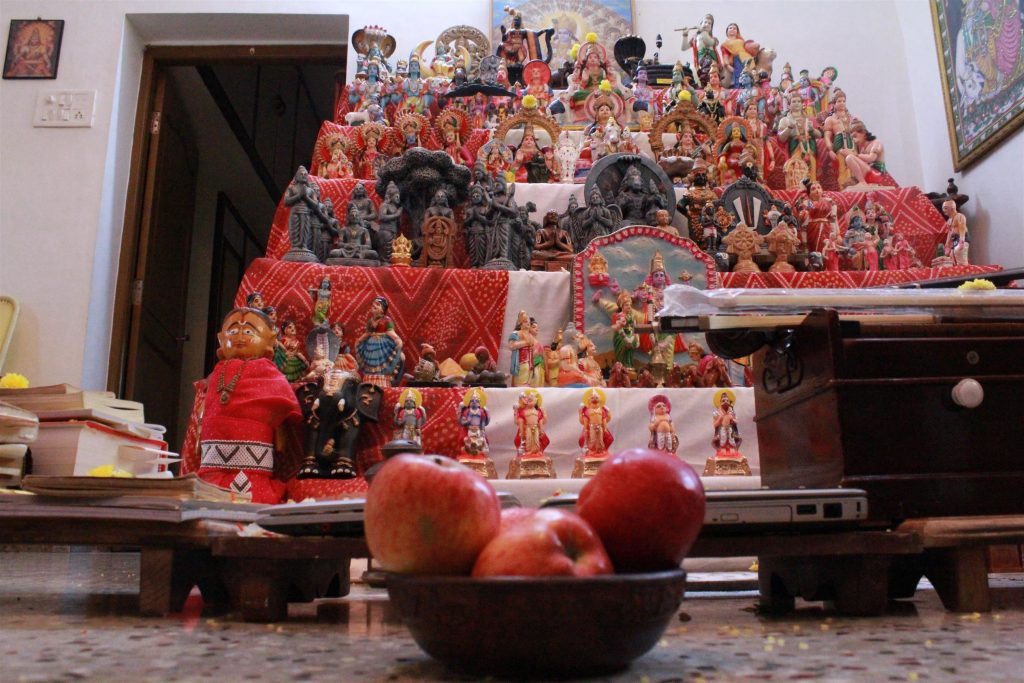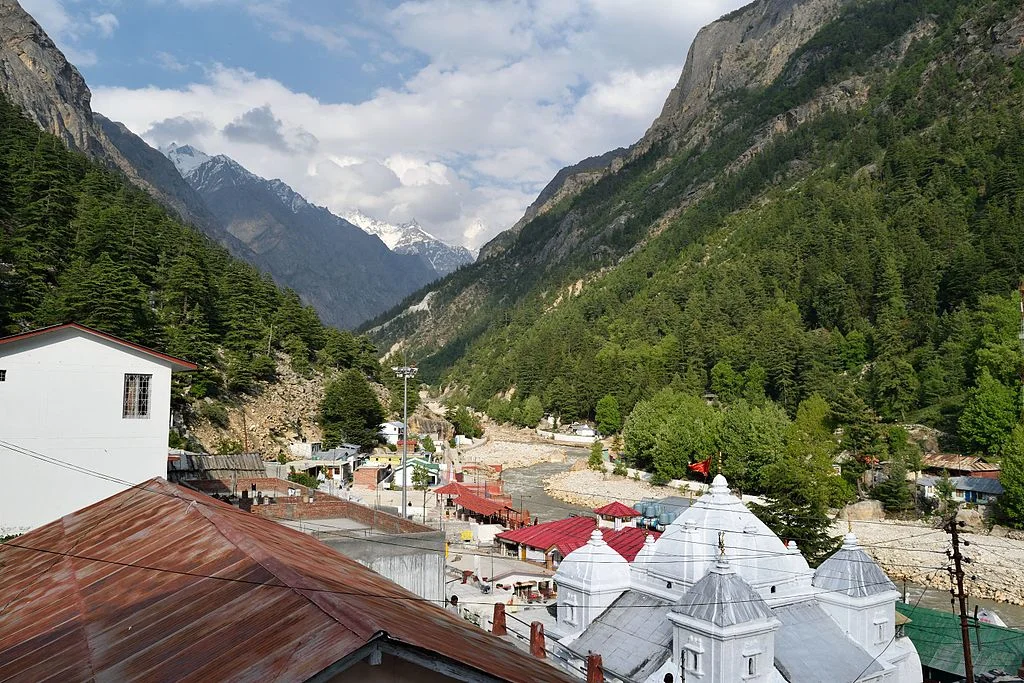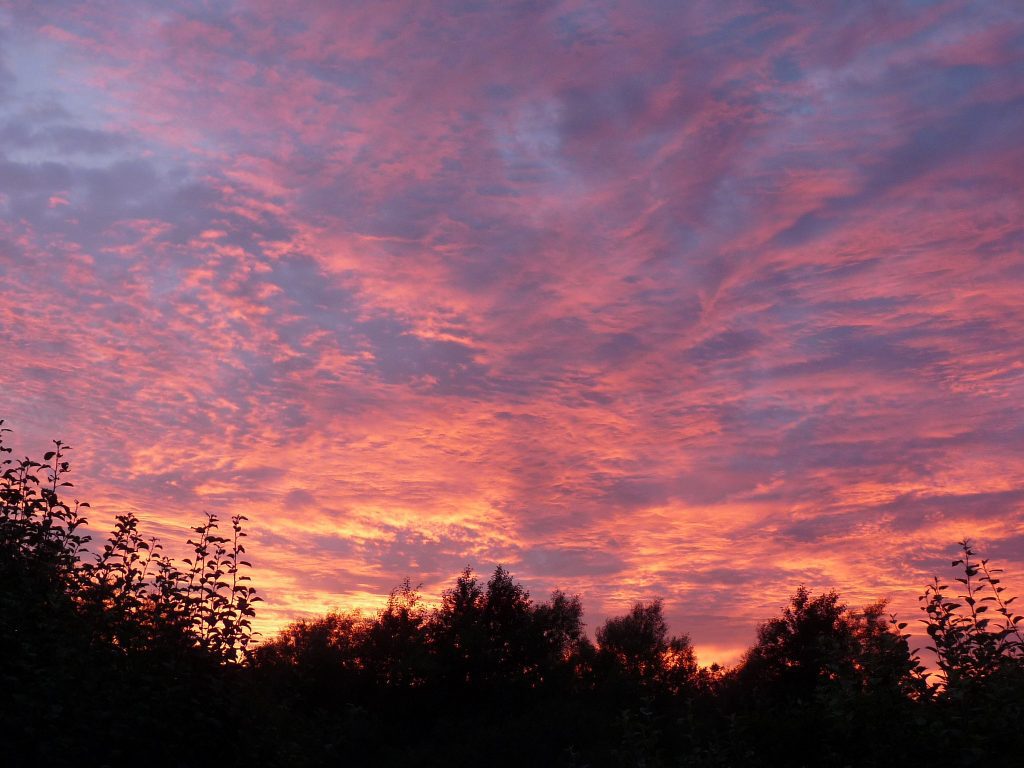I was jolted awake by the radio announcing, “India is not only the world’s largest tea-drinking nation but also its second-largest producer.” Annoyance coursed through me as the broadcast disrupted my peaceful slumber, but curiosity compelled me to get out of bed. I stumbled out of my room, and in the dimly lit kitchen, my dad sat, with a steaming cup of tea in his hand, avidly listening to the ‘tea commentary’ on the radio. The tea plantations in the Northeast states filled in my mind.
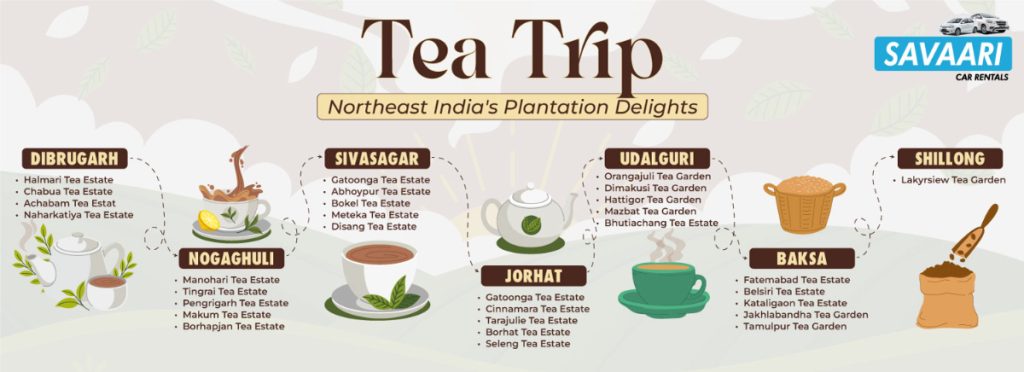
Suddenly, a thought randomly crossed my mind, “Is this day all about tea?” I found myself yelling it out loud. Just then, my mom appeared with a warm smile and asked, “Do you want tea?” Her timing couldn’t have been more impeccable. At that moment, it struck me like a lightning bolt – the serendipitous alignment of tea in my life today. I’ve always been a tea lover, and here I was, surrounded by its essence. I sipped my mom’s chai, it’s comforting warmth coursing through my veins.
As I savored each sip, I realized this was the universe’s way of sending me a message. I recalled the long-standing plan my friend and I had of embarking on an epic road trip. Suddenly, it all came into place. What if we ventured on a road trip through the tea gardens of Assam?
The idea was like a perfect cup of Assam tea, a blend of excitement and anticipation. It was a journey that combined my passion for travel, my love for tea, and a longing for adventure. And so, as I sipped that memorable cup of tea, the blueprint for our North East tea plantations expedition began to take shape. My friend and I took a flight from Delhi to Dibrugarh, where we decided our tea plantation road trip would begin. And with that thought in mind, I booked a Savaari from Dibrugargh for this incredible road trip with my friend. The North East awaited, promising a breathtaking landscape of verdant tea gardens of Assam. I was ready to embark on this unforgettable journey.
Day 1 – Dibrugarh
After landing in Dibrugarh, we quickly checked into our hotel to freshen up. Despite the fatigue from our journey, the excitement was too palpable to resist, so we decided to visit a nearby tea plantation the very same day. By booking a Savaari airport taxi, you can enjoy a relaxed journey. Earlier, we had wisely booked a Savaari, which now awaited our arrival. Its timely presence was a blessing, allowing us to kickstart our adventure without delay. The rolling tea gardens beckoned, and there was no looking back.
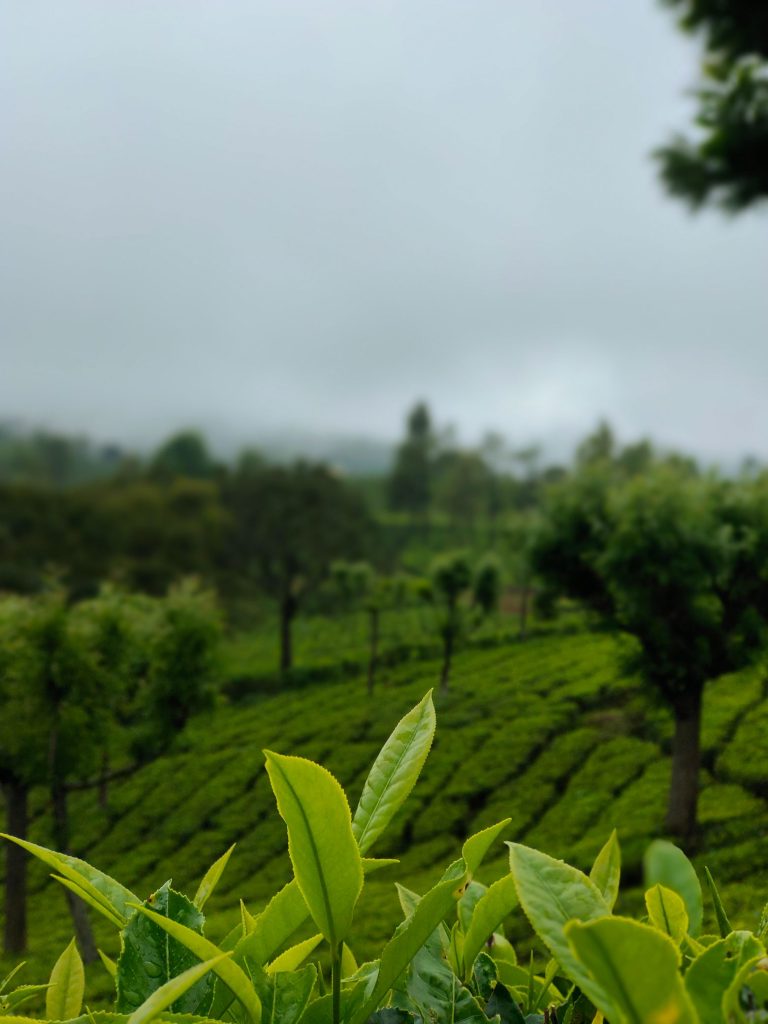
Our tea adventure began amidst the captivating landscapes of Dibrugarh, often hailed as the “Tea City of India.” Bathed in the morning sun’s gentle warmth, we journey into the heart of Assam’s tea plantations culture, beginning with the tea plantations in Dibrugarh. Starting our journey comfortably in our Savaari car, we shared our anticipation for the upcoming tea plantation explorations with our reliable driver, who had seamlessly transformed into more than just our chauffeur—he was now our guide and fellow explorer. To our delight, he handed us a well-worn brochure that unveiled the history of tea cultivation in Assam.
While Dibrugarh, nestled by the mighty Brahmaputra River, has long been a hub for tea cultivation since the British era, its history with the beverage stretches even further. The British, realizing the abundant potential of Assam’s fertile plains, turned Dibrugarh into one of the foremost regions for high-quality tea production. By the 19th century, vast tea estates had sprawled across this region, solidifying Dibrugarh’s status in the annals of tea history. Our driver’s dedication to enhancing our journey left us profoundly moved. It epitomized the essence of our adventure—a journey fueled by passion, curiosity, and the shared joy of discovery. The brochure reminded me of one blog I read about the tea plantations in Darjeeling, which inspired this journey.
As we delved deeper into Assam’s tea culture, every sip of tea became a new chapter in our adventure through tea gardens of Assam, and every vista we encountered was a page waiting to be savored. The aged brochure transported us back to the time the fertile plains were first introduced to tea cultivation. The simple act of our Savaari driver sharing this historical brochure set the stage for an unforgettable expedition.
Tea plantation to visit in Dibrugarh
Halmari Tea Estate
Our tea adventure in Dibrugarh began with a visit to the charming Halmari tea estate, within the vast expanse of tea gardens of Assam. Halmari wasn’t just any tea garden; it was a place with a tea-making tradition that spanned over a century. We realized its significance as we roamed the estate’s vast 374-hectare grounds. During our exploration, something intriguing happened, revealing the secrets of Halmari’s tea-making art.
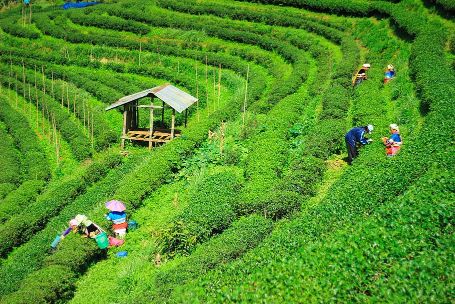
We met a group of experienced tea pluckers working amidst the tea bushes. Their skill was evident as they carefully plucked tea leaves. We struck up a conversation, and this chance meeting became an unexpected information source. One of the pluckers, an elderly lady with well-used hands, shared stories that had been passed down for generations. She told us about the Daga Family’s dedication to making high-quality tea. These stories gave us a unique insight into Halmari’s history. While walking through the tea fields, we saw the plucking process. It was a combination of old traditions and new ideas. The pluckers took five to six days to pick the best leaves. Our conversations and observations deepened our understanding of Halmari’s teas. We realized that every sip held the essence of Assam’s tea heritage. It was a heritage known and appreciated by tea lovers worldwide.
Distance – 28.1 km
Time taken (approximately) – 41 minutes
Things to do in Halmari Tea Estate
- Exclusive tea tasting session at Halmari – As mentioned earlier, delve deep into the world of Assam teas, understanding their unique characteristics.
- Guided tea garden tours – Explore the vast expanses of Halmari’s tea gardens, a serene experience to understand the lifecycle of the tea plant.
- Factory tour – Get behind the scenes with a factory tour at Halmari, witnessing the journey of tea from leaf to cup.
- Experience Assamese culture – Engage with the estate’s local community, witnessing and participating in their songs, dances, and traditions.
- Local gastronomy – Satiate your palate with authentic Assamese dishes, a blend of flavors representing the region’s rich culinary heritage.
- Dehing patkai wildlife sanctuary- A short drive from Halmari, this sanctuary is known as the ‘Amazon of the East.’ It’s a haven for wildlife enthusiasts with its diverse flora and fauna, including elephants, leopards, and various bird species.
- Visit Sivasagar: A historical town known for its Ahom monuments and tanks, Sivasagar bears testimony to Assam’s rich history and cultural heritage.
After our enlightening visit to the tea plantation, we took advantage of our time in Dibrugarh to explore a few nearby attractions. As the sun began to dip below the horizon, we wrapped up our first day’s journey, eager and energized for the adventures the next day promised to bring.

Day 2 – Dibrugarh to Nogaghuli
We woke up excited on our second day, ready to head to Nogaghuli in Assam. Our driver, familiar with the area, suggested a popular plantation in Nogaghuli. With that plan in mind, we set out, eager for the day ahead. Leaving behind the misty hills of Dibrugargh, we set out on a new day of our tea exploration journey. The road is a transition from the bustling tea city of Dibrugarh to the scenic beauty of Nogaghuli, a journey that offers a mesmerizing blend of urban charm and natural splendor. As we moved away from Dibrugarh’s tea-centric hustle, we were treated to a visual symphony of expansive fields, tranquil water bodies, and the promise of unique experiences ahead. As we approached Nogaghuli, often situated amidst the lesser-known, yet enchanting tea gardens of Assam, the scent of tea leaves seemed to grow stronger.
Manohari Tea Estate
The journey led us to the gates of the Manohari Tea Estate, one of the many beautiful tea gardens of Assam. The sheer expanse of tea gardens left us in awe as we approached the estate. With its vast 1800-acre expanse, the estate seemed to stretch endlessly into the horizon. The history of Manohari Tea Estate is as captivating as the lush greenery surrounding it. Established during the British era, it has been an integral part of Assam’s tea legacy. We couldn’t help but feel the weight of history as we entered this tea haven.
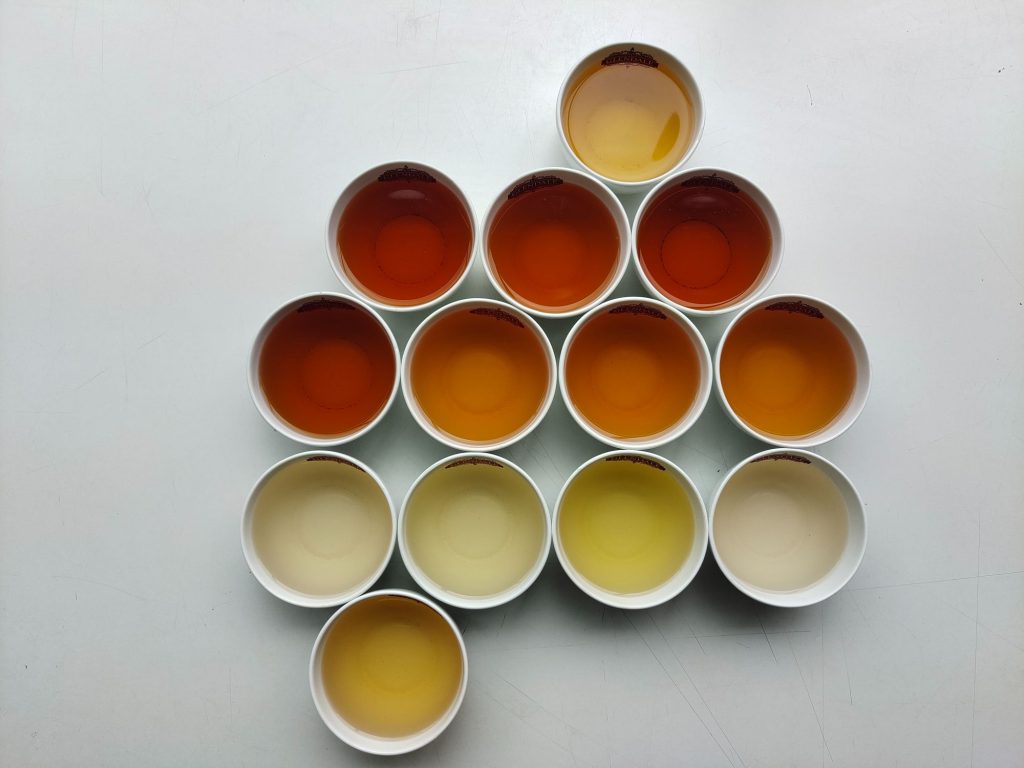
One thousand acres of this sprawling estate were adorned with meticulously manicured tea bushes, each a testament to the dedication and expertise that had gone into cultivating them over the years. The altitude, at a modest 390 feet above sea level, was perfect for tea cultivation, and the estate’s location along the Indian-Burmese border added to its mystique. As we strolled through the tea gardens, the air was filled with the intoxicating aroma of freshly plucked tea leaves. It was a fragrance that hinted at the promise of a remarkable cup of tea. The tea leaves harvested here were renowned for their unparalleled quality and rich flavor.
Distance – 13 km
Time taken (approximately) – 24 minutes
Things to do in the Manohari Tea Estate
- Manohari gold tea tasting – Manohari is known for its premium ‘Gold Tea,’ which has fetched record prices at auctions. Schedule a tea-tasting session to savor this exclusive blend and understand its unique characteristics.
- Guided estate walks – Embark on guided tours of the sprawling tea gardens. These tours often explain tea production’s various stages – from plucking to processing.
- Factory visit – Gain insights into the tea-making process by touring the Manohari factory. Witness the transformation of raw tea leaves into the finished product, understanding processes like withering, rolling, fermentation, drying, and sorting.
- Experience local Assamese cuisine – While at the plantation, ensure you try the local Assamese dishes. Assam has a rich culinary heritage with words like ‘Masor Tenga’ (sour fish curry) and ‘Alu Pitika’ (mashed potatoes with mustard oil and spices).
- Cultural immersion – Engage with the local tea workers. Understand their daily routines, traditional songs, dances, and stories. This cultural immersion can be a touching experience, shedding light on the vibrant community that supports the tea industry.
- Visit Dibrugarh town – The nearby Dibrugarh town has its own attractions and historical sites. Take a short trip to explore local markets, temples, and the region’s colonial heritage.
As the day drew to a close, our hearts were full of joy from the day’s experiences. We found a cozy hotel near the plantation to rest, reminiscing about our adventures and looking forward to what the next day had in store.
Day 3 – Nogaghuli to Sivasagar
The next day began with our driver greeting us with a broad smile, a clear indication of his excitement. He had already scoped out some excellent plantations for us to visit that day, which only added to our enthusiasm. We started our journey to explore the secrets of the world famous Assam tea. Our next stop was the captivating Mangalam Tea Estate, one of the premium tea gardens of Assam in the beautiful Sibsagar district of Assam. As we ventured deeper into Assam’s tea heartland, we noticed the landscape transform. The tea gardens here differed from what we had seen before, with the tea plants neatly arranged, creating a striking pattern across the terrain. That was actually a realization moment, to why this tea gardens of Assam are considered as one of the beautiful places in India.
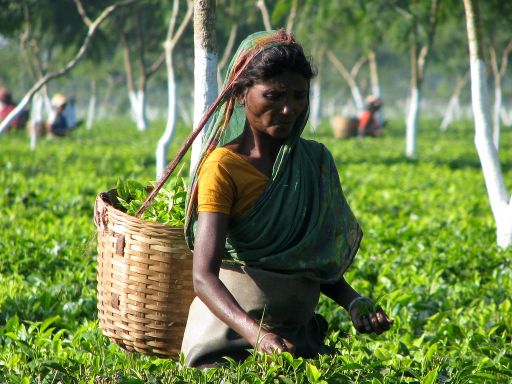
Mangalam Tea Estate covered a vast area of 118 hectares, and what set it apart was the unique, smoother tea it produced. This tea had a distinct taste that tea enthusiasts cherished. The estate layout was designed for efficiency, with well-planned roads providing easy access to every acre of the tea plantation. While we explored the estate, we couldn’t help but notice the meticulous care that went into cultivating the tea bushes. The result was a collection of top-quality teas, both Orthodox and CTC that commanded high prices in the market. What truly caught our attention, though, were the Orthodox teas, which had gained immense popularity in Germany. It was remarkable how a tea from this corner of Assam had found a fan base thousands of miles away. Mangalam Tea Estate wasn’t just limited to Orthodox and CTC teas; it also produced Green Tea.
Distance – 78.2 km
Time is taken (approximately) – 2 hours 2 minutes
Things to do in Mangalam Tea Estate
- Exclusive Mangalam tea tasting – Mangalam is unique because it has larger leaves than many other tea estates due to its specific clones and planting method. Join an entire tea-tasting session at the estate to understand and appreciate the distinct characteristics of Mangalam teas.
- Plantation walk – Take a guided stroll through the tea garden. Unlike many traditional tea gardens, Mangalam was developed with sufficient space between the tea bushes, allowing larger, high-quality leaves to grow. This unique plantation design is worth observing.
- Cultural programs – Some tea estates, including Mangalam, occasionally organize cultural programs or events showcasing the rich traditions of Assam, from Bihu dances to folk songs. Check with the estate’s management about any ongoing or upcoming events during your visit.
- Nameri national park – Located near Tezpur, this park is home to tigers, elephants, and other wildlife. It’s also known for its bird diversity, making it a haven for birdwatchers.
We ended the day by writing everything down in my diary, planning to turn it into an article later. Thinking about all our adventures and what was coming next, I was too excited to sleep.
Day 4 – Sivasagar to Jorhat
With the first light of a new day, anticipation filled the air as we looked forward to the next chapter of our tea journey. The serene beauty of Mangalam Tea Estate, which is a part of the sprawling tea gardens of Assam, was now a cherished memory. Eagerly, we embarked on our next adventure to Cinnamora Tea Estate. The Cinnamora Tea Estate holds the distinction of being Assam’s inaugural tea garden, celebrated for its quality tea. Established in 1850, this historic tea estate was the brainchild of Maniram Dewan, who once served as the chief for an assistant commissioner under British rule in Jorhat. Situated a mere 10 km from the heart of Jorhat city, the Cinnamora estate presents a breathtaking expanse of verdant greenery, especially during the prime harvesting times. Strolling along the slender pathways, flanked by lush tea shrubs, was a delightful experience.
As we wrapped up our visit, our knowledgeable driver, sensing our enthusiasm, suggested, “If you enjoyed this, you should definitely visit Majuli Island. It’s a world unto itself.” Trusting his local insight, we ventured to Majuli, the world’s largest river island. There, amidst the expansive Brahmaputra River, we immersed ourselves in the rich cultural heritage and untouched beauty of the island. The traditional Assamese art forms, ancient satras (monastic centers), and the tranquil ambiance of Majuli added a vibrant hue to the tapestry of our journey.
Distance – 61 km
Time taken (approximately) – 1 hour 43 minutes
Things to do in Cinnamora Tea Estate
- Tea tasting at Cinnamora – Delve deep into the flavors of Cinnamora’s signature teas. Discover the subtle differences in taste and aroma of each variety.
- Guided estate tour – Roam the tea gardens with an expert guide, learning about Cinnamora’s storied past and the tea-making process.
- Majuli island – About 20 km from Jorhat (via Nimati Ghat). As the world’s largest river island, Majuli is a cultural haven. Witness traditional Assamese art forms, visit ancient satras (monastic centers), and enjoy the scenic beauty of the Brahmaputra River.
- Hoollongapar Gibbon wildlife sanctuary – Roughly 20 km from Jorhat. Home to the only apes in India, the Hoolock gibbons, this sanctuary is a must-visit for wildlife enthusiasts.
- Nimati ghat – Around 15 km from Jorhat. It’s the main ferry point for boats to Majuli. Enjoy a serene boat ride and capture the vastness of the Brahmaputra.
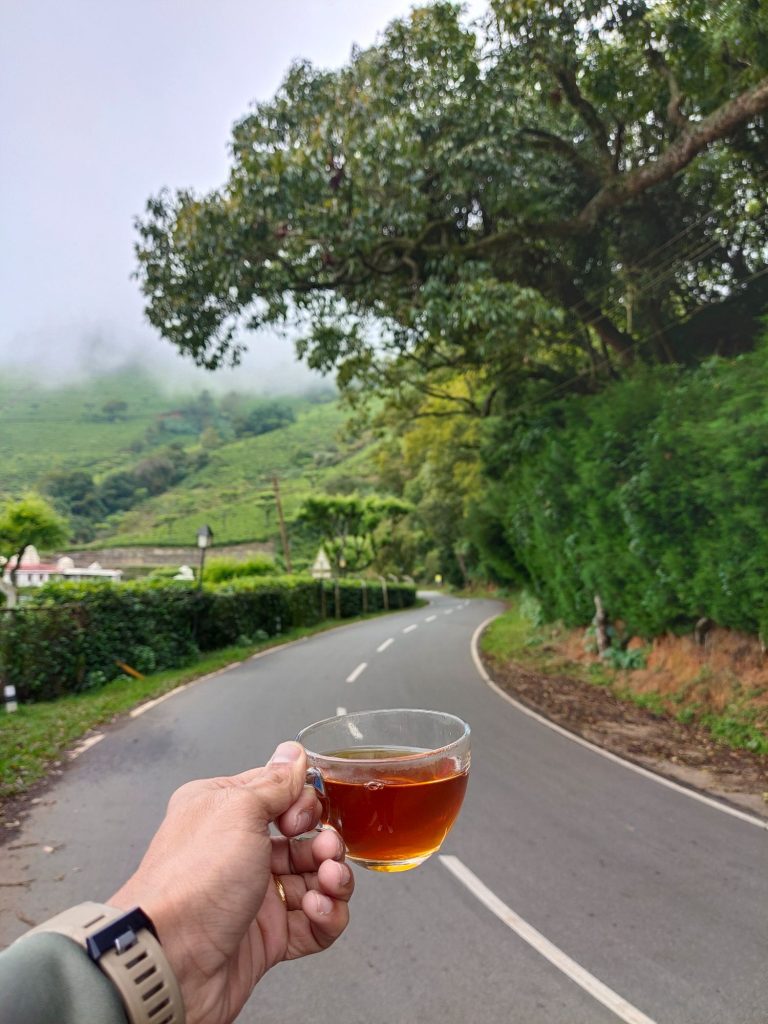
The journey was long, but the experiences were amazing. The sights, sounds, and stories from the plantation left an indelible mark on our hearts. By the time we finished our visit, dusk was settling in. With a day so full, we decided to rest and continue our road trip the next morning, eager to see what more the journey would disclose.
Day 5 – Jorhat to Kaziranga national park
After days of immersing ourselves in the aromatic world of tea plantations, Day 5 promised a shift in the narrative of our journey. We woke up to a bright Jorhat morning, buzzing with the energy of new adventures on the horizon. The verdant landscapes of tea gardens of Assam were about to be replaced by the wild, untamed beauty of the Kaziranga National Park. Kaziranga is a place which beholds a lot of special hidden gems to explore, to know more about this place, check out this blog. Our drive began with the sun casting long shadows on the roads, the landscape morphing as we moved away from Jorhat. Gone were the manicured tea gardens, and in their place, the raw, untouched beauty of Assam’s countryside began to unfold.
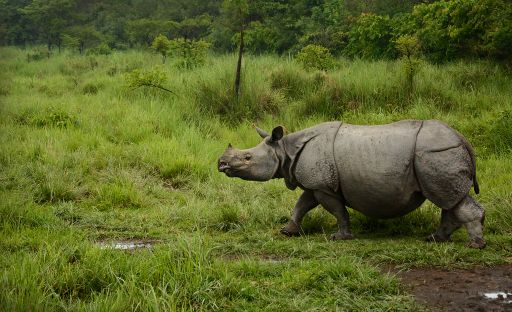
As we neared Kaziranga, stories of its famed one-horned rhinoceros, wild water buffaloes, and vibrant birdlife filled our conversations. We spoke excitedly about the potential of spotting a tiger lurking in the tall elephant grass or witnessing a herd of elephants meandering through the park’s vast expanse. Our guide shared tales of the park’s conservation successes and the deep bond between the local tribes and the diverse wildlife residing there. Upon arrival, the rustic charm of our jungle lodge greeted us—a perfect blend of comfort and wilderness. We could hear the distant calls of the wild and the whispering of the trees swayed by the wind.
Distance – 111.6 km
Time taken (approximately) – 2 hours 24 minutes
Things to do in Kaziranga National Park
- Enjoy elephant safari – An exhilarating way to explore Kaziranga’s wildlife, elephant safaris let you view animals up close. Covering ranges such as Bagori, Agoratoli, Burapahar, Kohora, and Panbari Reserve Forest, it promises a thrilling start to the morning.
- Take the customary jeep safari – Dive deep into Kaziranga’s wilderness with the more common jeep safari. Covering the park’s four zones, this open-jeep ride is an adrenaline-pumping experience.
- Engage in bird watching – Blessed by the Brahmaputra River, the park offers diverse bird spotting opportunities. Especially the eastern range, rich with water lagoons, attracts a myriad of bird species.
- Visit the Kaziranga National Orchid Park – Located near the Central Range, this park boasts about 500 orchid species. Spanning over 5.95 acres, it’s one of the largest orchid reserves in India.
- Take a tour of the tea estate – Experience the essence of Assam with a visit to the Tocklai Tea Research Institute. Get insights into tea research and stroll through mesmerizing plantations.
- Day out in tribal villages – Explore nearby tribal villages for a cultural immersion. Discover local crafts, traditions, and the vibrant lifestyle of Assam’s tribes.
- Take boat safari to watch endangered Gangetic dolphins – Enjoy a boat ride on the Brahmaputra River while spotting the rare Gangetic Dolphins. It’s a serene experience combined with a conservationist perspective.
- Watch cultural shows and folk dance – Spend an evening at the Kaziranga National Orchid Park enjoying local performances. Witness the bamboo and Bihu dances that beautifully depict Assamese culture. You can enjoy a safe and relaxed journey through all these locations by getting Savaari services by downloading the Savaari car rental app.
After a day filled with adventure and cultural insights in Kaziranga, we checked into a hotel nearby to rest and rejuvenate. The day’s experiences, from wild safaris to vibrant dances, left a profound mark on us, enriching our understanding of Assam’s natural and cultural treasures. We shared stories and moments from the day over a quiet dinner, reminiscing about the sights and sounds. The comfort of the hotel provided a perfect contrast to the wildness of the day, and as we retired to our rooms, there was a shared feeling of gratitude and excitement for the journey ahead.
Day 6 – Kaziranga national park to Udalguri
We started our journey, and our next destination was Corramore tea estate, one of the iconic tea gardens of Assam. The journey to Corramore was as enchanting as the destination itself. From Udalguri town, a scenic 21.5-kilometer drive led us to this tea haven. If you’re starting your tea journey from Guwahati, the route to Corramore covers only 123 kilometers, making it easily accessible. Corramore Tea Estate has a fascinating history dating back to the 1860s when Robert Logan from Scotland founded it. The estate remained in the Logan family for over 120 years, a testament to their dedication and love for tea cultivation. The year 1993 marked a significant milestone in Corramore’s tea production history. It achieved a remarkable feat by producing a whopping 983,568 kilograms of tea. This milestone was attributed to improved field practices and favorable weather conditions.
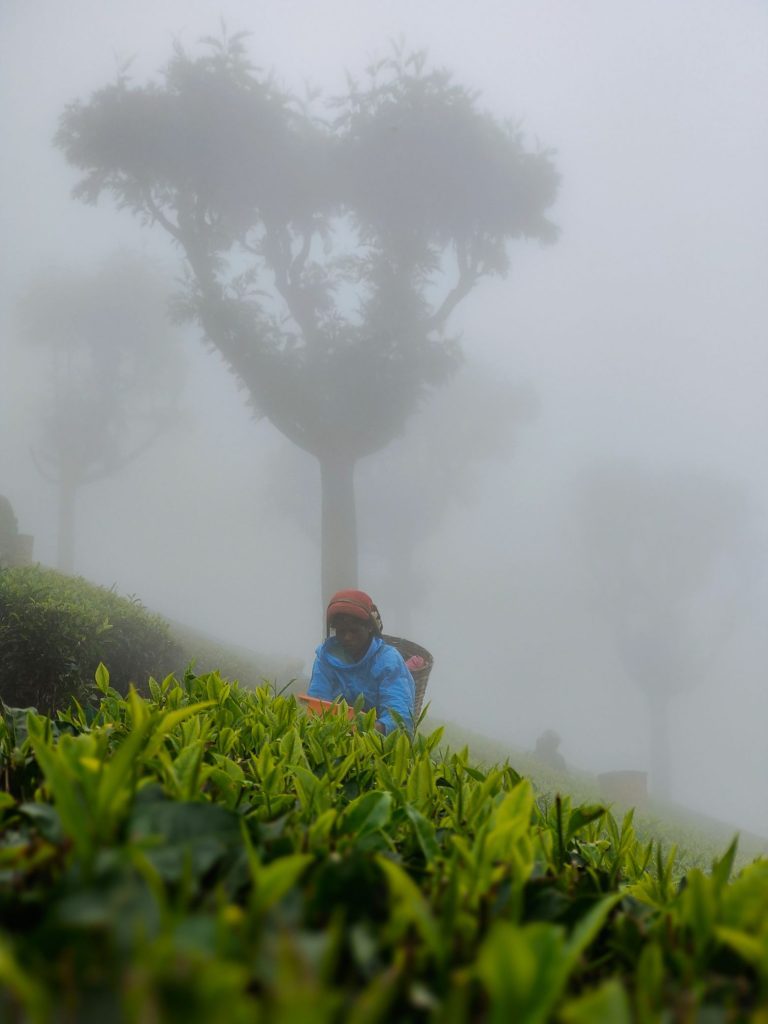
Our arrival at Corramore Tea Estate offered a breathtaking view of the Kaziranga Hills, providing a picturesque glimpse of the landscape near Bhutan. The Udalguri district has numerous majestic tea estates, including Ambika Tea Estate and Bateli Tea Estate. The region’s scenic beauty is truly mesmerizing, with well-maintained roads, lush tea gardens, and impeccable amenities enhancing the overall experience. However, it’s essential to address a concern that taints the beauty of this region. The irresponsible disposal of garbage, bottles, plastics, and other waste materials has marred the pristine environment. It’s a reminder that we must all play a part in preserving the natural beauty of places like Corramore Tea Estate.
Distance – 127.2 km
Time taken (approximately) – 3 hours 22 minutes
Things to do in Corramore Tea Estate
- Corramore tea tasting – Start with a tasting session of the estate’s teas. If Corramore has any specific blends or unique tea varieties, this would be the perfect occasion to sample them.
- Estate walkabout – A guided tour of the tea gardens will let you experience the serene beauty of the place and understand the specifics of tea cultivation at Corramore.
- Factory insight – Delve into the tea processing journey with a factory tour. This is where you can understand what makes Corramore’s processing different or unique compared to other estates.
- Local handicrafts and shopping – Assam is famous for handicrafts, especially handwoven textiles like Muga and Eri silk. You can also buy these in nearby markets or villages.
- Tea workshops – Some estates organize workshops where visitors can learn about the intricacies of tea grading blending and even try their hand at creating their blends.
The sights, sounds, and stories from the plantation left an indelible mark on our hearts. The tea gardens of Assam are like heaven on earth. By the time we finished our visit, dusk was settling in. With a day so full, we decided to rest and continue our road trip the next morning, eager to see what more the journey would unveil.
Day 7 – Udalguri to Baksa
Our voyage through the vibrant tapestry of India’s tea gardens continued, bringing new adventures and discoveries each day. On this leg of our tea journey, the sun’s gentle rays illuminated the Assamese landscape, and we embarked on our next destination: Nagrijuli Tea Estate, nestled in the Baksa district of Assam. The name ‘Nagrijuli’ held a mystical charm, derived from the local language’s “Narchi-Juri,” which translates to ‘eternal spring.’ This moniker perfectly encapsulated the essence of the teas produced here, known for their refreshing and timeless quality, much like a perpetual spring.
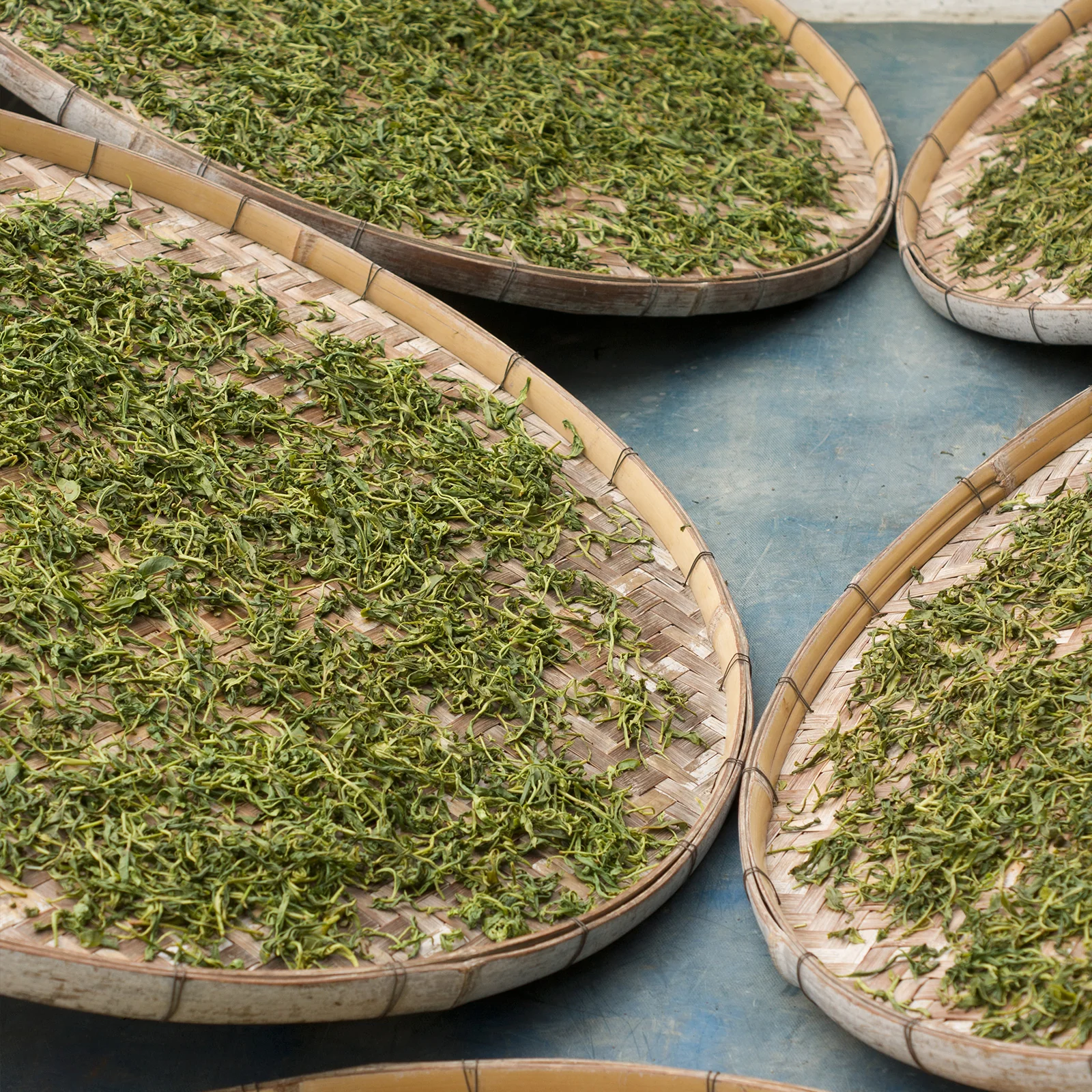
Nagrijuli Tea Estate has garnered acclaim for its CTC teas, renowned for their exceptional quality in the domestic market. However, what truly set Nagrijuli apart was its ability to produce equally remarkable Orthodox teas, known for their sappy bright liquor. This estate thrived in an environment blessed with an ideal climate for tea cultivation. The lush green expanse was further enriched by diverse flora and fauna, and the meandering Barnadi River added to the estate’s natural beauty. Nagrijuli Tea Estate unfolded before us with a unique allure as we ventured deeper into the tea gardens of Assam.
Distance – 57.6 km
Time taken (approximately) – 1 hour 10 minutes
Things to do in Nagrijuli Tea Estate
- Tea tasting at Nagrijuli – Experience the distinct flavors and blends of the estate’s teas with a dedicated tasting session.
- Guided tea garden tour – Walk through the Nagrijuli tea gardens, learning about their cultivation techniques and history.
- Nagrijuli island picnic spot – Relish a day at this serene picnic spot, which is ideal for relaxation, bird watching, and photography.
- Bornadi wildlife sanctuary – Explore this biodiverse sanctuary, home to various endangered species. It’s a haven for wildlife enthusiasts.
- Daragaon picnic spot – Spend a day here enjoying the natural beauty, the calm ambiance, and perhaps a well-packed picnic amidst picturesque settings.
- Grassland eco camp – Experience eco-friendly accommodations and activities, soaking in the rich natural beauty and learning about local flora and fauna.
- Nature walks around Nagrijuli – The region around the estate is likely rich in biodiversity. Embark on guided or self-led walks to appreciate the natural surroundings.
Day 8 – Baksa to Shillong
As dawn broke on our final day, the tea gardens of Assam and wild jungles that had been the backdrop to our adventure started to recede in the rearview mirror. Our destination was Shillong, the “Scotland of the East,” known for its captivating landscapes and unique culture.
The drive from Baksa to Shillong was scenic, filled with glimpses of rolling hills, waterfalls, and local villages. Every twist and turn of the road seemed to reveal a new vista, making the journey itself an experience to cherish. We discussed our favorite moments from the past days, each of us holding onto different memories that had touched our souls. Also Shillong is famous for its cherry blossom festival, which mesmerizes everyone. To know more about this festival, click here to read the full blog.
Our tea adventure in Shillong began with a visit to the charming Lakyrsiew Tea Garden, one of the few tea gardens of Assam that has extended to the Meghalaya region. This place can also be considered as a jewel of the tea gardens of Assam. As we made our way to this hidden gem, we couldn’t help but stay amazed at the stunning landscape that Meghalaya, aptly named “home of the clouds,” had to offer. Lakyrsiew Tea Garden is a testament to the dedication and passion of its owners, Meghalayan native Nayantara and her husband, Geert Linnebank. While the garden has been officially producing tea since 2008, its history traces back to the 1840s when the East India Company recognized the region’s climate and soil as ideal for tea cultivation. Unfortunately, the project was abandoned due to local tribal rules prohibiting outsiders from working on the land.
Fast forward nearly two centuries and the Linnebanks stumbled upon these historical plans. They embarked on a journey to fulfill this legacy by planting tea on Nayantara’s ancestral land in 2002. Their mission was simple yet profound: to create the finest tea possible, using the highest quality cultivars, all while adhering to organic principles and allowing the terroir and character of the land to shine through. Tea tourism is an integral part of these Northeastern states, and to know more about how these tea plantations are boosting the tourism here, read this blog.
Distance – 180.4 km
Time taken (approximately) – 4 hours 45 minutes
Things to do in Lakyrsiew Tea Garden
- Tea tasting sessions – Dive deep into the nuances of Lakyrsiew’s boutique teas. Learn about the flavor profiles, aroma, and the art of tea tasting. Compare different batches and pick your favorite.
- Guided tea garden tour – Walk amidst the lush green tea bushes, witnessing firsthand the cultivation practices of this high-quality tea. Understand the journey from leaf to cup as you are guided through the plucking, withering, rolling, and drying processes.
- Stay at the boutique bungalows – Experience the tranquility of the tea garden by staying at the estate’s boutique bungalows. These offer a serene view of the tea plantations and provide a cozy atmosphere reminiscent of the colonial era.
- Local Khasi cuisine experience – While you’re there, indulge in the authentic flavors of Meghalaya. The Khasi cuisine is known for its unique dishes using local ingredients and traditional methods. You can easily book a Savaari taxi in Shillong to enjoy these tastes.
- Explore the surrounding flora and fauna – The garden is nestled amidst the rich biodiversity of Meghalaya. Take nature walks and birdwatching tours to experience the diverse ecosystem surrounding the tea estate.
- Engage with the community – Interact with the local workers and understand their way of life, traditions, and stories. This engagement provides a more profound, human connection to the place and its tea.
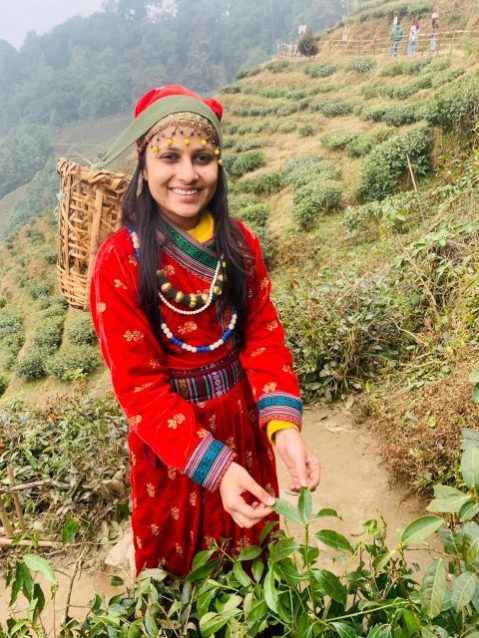
After visiting the lush North east tea plantations, Shillong’s beauty had us spellbound. The sprawling green fields and the serene ambiance were a visual treat, making us yearn for more. However, amidst this allure, we realized we had barely explored the urban charms of Shillong. The bustling markets, colonial-era architecture, and tales of the city remained unexplored. The desire to witness the panoramic views from Shillong Peak and savor the local dishes was too strong to ignore. It became evident that our journey in this enchanting city was not done. Succumbing to Shillong’s magnetic pull, we decided to extend our stay. Two more days were added to our itinerary, ensuring ample time to truly immerse ourselves in everything Shillong had to offer.
Day 9 – Exploring Shillong
Awakening to the harmonious sounds of Shillong, we felt a blend of excitement and tranquility. With a day planned to uncover some of Shillong’s most iconic landmarks, we set off bright and early to make the most of it.
Our first pit stop was the Elephant Falls, located about 12 km from the city center. As we approached, the gentle roar of cascading waters reached our ears. The falls, spanning three tiers, presented a mesmerizing sight with its glistening waters and lush backdrop. Nature seemed to be at its purest form here, and we spent a serene hour, soaking in the ambiance, capturing memories with our cameras.
As we ascended the city, our next destination was Shillong Peak. At an altitude of 1,965 meters, it is the highest point in Shillong. The drive itself was scenic, with winding roads flanked by tall pines. Upon reaching the peak, Shillong lay sprawled beneath us, a tapestry of urban sprawl and green expanses. It was a view that words could hardly justify. Standing there, with the cool wind brushing against our faces, we felt on top of the world, both figuratively and literally.
Post the natural retreat, it was time for some urban exploration. We headed straight to Police Bazaar in the heart of Shillong. This bustling market is the epicenter of local life. From the aroma of Khasi delicacies wafting through the air to stalls selling unique crafts and attires, the market pulsated with life. The perfect spot to pick souvenirs, we indulged in some shopping and even sampled local treats.
Things to do in Shillong
- Elephant Falls – Visitors often find solace in the gentle trails leading to the waterfall’s multiple tiers. Each path offers a unique vantage point, ideal for capturing the cascade’s beauty on camera. The surroundings beckon with stalls showcasing local snacks and crafts, adding a cultural touch to the natural retreat.
- Shillong Peak – From the summit, one can marvel at the panoramic tapestry of Shillong and its sprawling vistas. The observation deck provides an uninterrupted view, and carrying binoculars can enhance the experience, offering close-ups of distant landmarks. The serene ambiance makes it perfect for a quiet picnic, surrounded by nature’s grandeur.
- Police bazaar – This bustling market epitomizes Shillong’s vibrant urban life. Navigating its lanes, one can taste authentic Khasi street food, shop for traditional crafts, and occasionally enjoy spontaneous street performances, all while soaking in the city’s dynamic pulse.
Day 10 – Journey to Mawlynnong
Dawn’s gentle light on Day 10 heralded a day of promise and excitement. As we navigated through meandering roads flanked by the iconic tea gardens of Assam, every turn seemed to unveil a scenic canvas. Our compass pointed towards Mawlynnong, hailed as Asia’s cleanest village. You can also read this blog, which will give you detailed information and interesting facts about Mawlynnong. The journey to reach this pristine village is as memorable as the destination itself. Navigating through meandering roads, flanked by lush greenery, every turn seemed to unveil a scenic canvas. The distant chants of birds, the whisper of the wind rustling through the leaves, and the occasional glimpses of local life by the roadside added depth to our journey.
Distance – 77.9 km
Time taken (approximately) – 2 hours 55 minutes
Things to do in Mawlynnong
- Living root bridges – Marvel at these unique natural bridges formed by intertwining the aerial roots of trees. They stand as a testament to nature’s wonder and the ingenuity of the local Khasi tribe.
- Sky walk – Ascend the 85-foot high bamboo structure, offering a bird ’s-eye view of the village, its waterways, and the Bangladesh plains in the distance.
- Balancing Rock – Witness this natural marvel where a large boulder rests on a tiny rock base, seemingly defying the laws of physics.
- Local cuisine – Sample authentic Khasi dishes, letting the flavors tell you stories of the land and its people.
- Village walk – Engage in a leisurely stroll, soaking in the village’s serene ambiance, its manicured gardens, and traditional Khasi huts.
- Church of the Epiphany – An old 100-year structure, it reflects the simplicity and harmony of Mawlynnong.
Our adventure through tea gardens of Assam was wrapping up, and the rich tapestry of experiences we had woven was nothing short of extraordinary. From the intricate dance of tea pluckers amidst the plantations to the warm conversations with locals over freshly brewed cups, each day had added a new story, a new lesson. Our ever-reliable driver was more than just someone behind the wheel; he became a vital chapter in our story. We couldn’t thank him enough for his insights, the local spots he showed us, and the laughs we shared on the road. Saying our goodbyes was bittersweet.
Waiting at the Shillong airport for our flight to Delhi. I booked a Savaari airport taxi from Delhi to my home for a peaceful travel. I found myself revisiting each day, each moment, and each aroma of the journey. As I reached into my pocket, my fingers brushed against something familiar – the brochure our driver had handed us on the very first day. It wasn’t just a piece of paper; it was now a cherished souvenir, a tangible memory of our starting point. As we boarded the plane, that brochure in hand served as a testament to the adventure we had embarked upon and the memories we created. With a heart full of gratitude, we flew back to Delhi, knowing that this journey had left an indelible mark on our souls.
Useful travel information
Last Updated on December 14, 2023 by Arathy Subhash Marath


